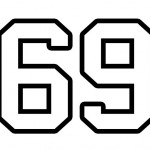 In Linux in the Ham Shack's sexiest episode ever, the guys take on some sensuous applications from the Python world. Dan, KK7DS, has been writing cross-platform software for D-STAR and rig programming for some time. Richard and Russ take on a couple of his more prominent works: d-rats and chirp. On the purely Linux and Open Source side of the program, there are some valuable nuggets that we'll let you all listen to find out about. And they try not to get too excited, but with this being Episode #071, it's hard not to. Thanks to everyone for downloading the show and have a Merry Christmas and bountiful New Year.
In Linux in the Ham Shack's sexiest episode ever, the guys take on some sensuous applications from the Python world. Dan, KK7DS, has been writing cross-platform software for D-STAR and rig programming for some time. Richard and Russ take on a couple of his more prominent works: d-rats and chirp. On the purely Linux and Open Source side of the program, there are some valuable nuggets that we'll let you all listen to find out about. And they try not to get too excited, but with this being Episode #071, it's hard not to. Thanks to everyone for downloading the show and have a Merry Christmas and bountiful New Year.
73 de The LHS Guys
Podcast: Play in new window | Download
2 comments on “LHS Episode #071: Nudge, Nudge”
Hello Richard and Russ,
Was it this episode or the previous one where you talked about d-star and different ways to use this ‘mode’? I think it was Russ who asked what the cheapest way to get on to d-star is? Any way, have yuo looked at http://www.allstarlink.org ?
This isn’t specifically for d-star, but I have used this portal (using nothing more than Google Chrome, Java and a mic) to talk to people that were using d-star radios that were set to the d-star digital mode. I even had one station switch back and forth between d-star and analogue to see if there was any difference.
Rather than a point to point, single protocol system such as Echolink, the technology behind allstarlink.org seems to be a way to tie these different protocols together. A friend told me about this website, and someone living on the Isle of Man confirmed to me that they have a d-star node connect to their repeater using this technology every morning, so not only can you use the website as a portal into not only the d-star world (and many others), but if your repeater is set up for this technology and a d-star node connects to your repeater then the repeater also becomes a gateway to talking to people on d-star.
Admittedly this doesn’t give you any of the benefits of d-star (and the website is a little flakey, it works well on one of my machines but not another), but it does give you access to their voice network.
One other thing, about digital ‘modes’…
We often use the term mode, but shouldn’t they be referred to as protocols? My reasoning behind this is quite simple; we use the same standard modes – usually SSB or FM), and use software (or hardware) to add a layer. All we are doing here is adding a protocol, a set of instructions that define how to send (or encode) and receive (decode) messages. We are still transmitting in SSB or FM. Maybe if we were to look at it in simple terms, if I suddenly started speaking Spanish or Italian, would I then be using a different mode? Of course not. Surely these digital ‘modes’ are protocols and we have been using the wrong term all these years?
Just a thought. GREAT show!
Paul 🙂
M0PGX
“but shouldn’t they be referred to as protocols?”
D-Star specifies a protocol, the modulation mode, a voice codec, etc…
D-Star uses GMFSK for modulation. Depending on whose description of GMFSK one reads it’s either just a very specific kind of FSK (which is FM) or it’s a whole different mode that just happens to be possible to generate by injecting a special signal into an FM modulator in the right spot.
Really it does modulate the frequency, with a steady amplitude but there are phase shifts involved too that aren’t normal FM.
Comments are closed.